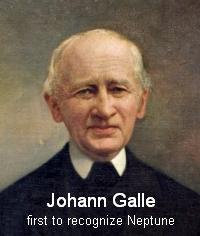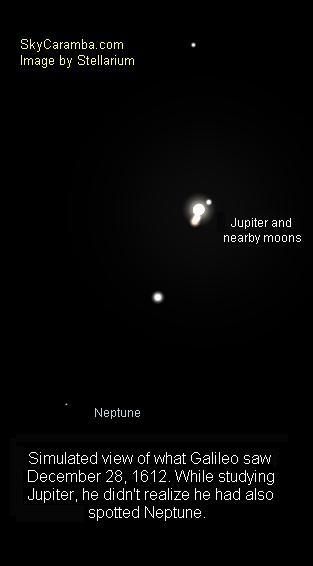Astronomy blog for the week ending July 9, 2011
 July 10, 2011 marks exactly one year since Neptune was discovered. That’s one Neptune year, not one Earth year. German astronomer Johann Galle saw the distant blue world on September 23, 1846.
July 10, 2011 marks exactly one year since Neptune was discovered. That’s one Neptune year, not one Earth year. German astronomer Johann Galle saw the distant blue world on September 23, 1846.
Galle wasn’t actually the first person to see Neptune. He was the first to recognize it for what it is. A mathematician, Urbain Le Verrier, predicted the small region in the sky where the yet unnamed Neptune would be found. Le Verrier asked Galle to take a look and there it was.
Le Verrier’s calculations were based on several assumptions about the orbit of Uranus. Astronomers had observed Uranus to be in slightly different positions than expected and thought there must be another gravity source out there pulling on it.
It wasn’t long after Neptune’s discovery when astronomers began observing it to be in slightly different places than expected. They concluded that yet another object, nicknamed Planet X, must be tugging on both Uranus and Neptune.
Today, it’s understood that Neptune never caused Uranus to stray like that and there is no Planet X that had any effects on Uranus or Neptune. Astronomers in the early 1800s simply had incorrect expectations. They didn’t accurately calculate Uranus’s orbit. Thus, they inaccurately predicted where it should be. Ironic maybe, fortuitous for sure, that wrong data led scientists right to Neptune. And it took a while before astronomers accurately predicted Neptune’s position.
 Neptune’s discovery could have happened earlier. Another astronomer, James Challis, went on a planet hunt a month before Galle. Challis spotted Neptune, but didn’t realize it. The same story is told about Galileo Galilee. He made drawings in December 1612 and January 1613 while tracking Jupiter. Jupiter passed close to Neptune. Galileo mistook Neptune for a star, although he did write a note about thinking the star had moved!
Neptune’s discovery could have happened earlier. Another astronomer, James Challis, went on a planet hunt a month before Galle. Challis spotted Neptune, but didn’t realize it. The same story is told about Galileo Galilee. He made drawings in December 1612 and January 1613 while tracking Jupiter. Jupiter passed close to Neptune. Galileo mistook Neptune for a star, although he did write a note about thinking the star had moved!
Those who think Pluto is a planet will disagree, but using the International Astronomical Union’s definition, Neptune is the most distant planet. You must have a telescope to see it. And like Galle, you have to know exactly where to look. One of the most useful tools for that is a planetarium program you run on your home computer. With it, you can see where Neptune will be and when it will pass close to other objects that are easier to find.
Unfortunately, Neptune is 30 Earth-Sun distances away from the sun. It moves so slowly, it doesn’t pass near other objects often. Usually, you have to wait for the other objects to pass by. Venus will pass 1.25° from Neptune in January 2012. Mars will be 0.4° from Neptune in February 2013. Neptune’s currently in Capricorn, a dim constellation, so there aren’t any bright stars near it either.
But if you get to see it, thinks of Neptune’s legacy. Even though the math was wrong, it was the first planet discovered by mathematics rather than happenstance. And it’s now been around the sun exactly one time since that night.

Some online news reports are saying Neptune’s first revolution since discovery will be complete July 12. Since the accepted value for Neptune’s orbital period is 60,190 Earth days, I’m adding that number to the September 23, 1846 discovery observation. That brings us to July 10, 2011. I’m sticking by my report.